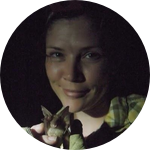About This Project
Anticoagulant rodenticides (AR) exposure is pervasive in carnivores, with direct and indirect effects on survival. Bobcats in Southern California are more likely to die from mange following AR exposure. While prohibitive legislation has recently been passed, a complete ban to prevent further wildlife poisoning requires demonstrating causality. We will combine advanced molecular methods with a non-invasive exposure assay to demonstrate the causal link between mange and AR exposure in bobcats.
Ask the Scientists
Join The DiscussionWhat is the context of this research?
Previous research by the National Park Service and our lab has linked anticoagulant rodenticide (AR) exposure to increased mange susceptibility in bobcats of the Santa Monica Mountains. A series of immunological assays showed that exposure to ARs causes severe dysregulation of the immune system, disabling the bobcats ability to generate a targeted immune response against the mange pathogen. However, the underlying molecular pathways causing this immune dysregulation are not understood and may be necessary to demonstrate a direct causal link between AR exposure and population health. This demonstration will provide stronger support for the need to eliminate all use of ARs for rodent control. We want to keep our wildlife (and our pets) safe!
What is the significance of this project?
Recently, the California Department of Pesticide Regulation reviewed the safety of ARs for the environment and passed regulations to limit but not eliminate their use. We feel strongly that even with limited use, these compounds will reach and effect non-target wildlife up the food chain. We are working to provide regulatory agencies with direct evidence that these compounds are unsafe for use in any context and should be eliminated.
What are the goals of the project?
We have already conducted gene expression analysis on 53 wild-captured bobcats for which ARs were and were not detected in whole blood. Our results are promising and we are identifying several gene pathways that play a role in immune dysregulation.
This summer, we plan to sample 6 captive animals that we know are not exposed to ARs. We have a non-invasive assay using a small amount of whole blood in which we can introduce specific stimulants to the assay vial and evaluate gene expression differences from the same individual. We will assay each animal for its response to a single AR, the mite antigen and an AR plus the mite antigen. This will enable us to demonstrate the causal link needed to facilitate further review by pesticide regulatory agencies.
Budget
The TruCulture Assay tubes allow us to challenge bobcat whole blood with both anticoagulant rodenticides and mange mite antigen separately and combined to examine the gene networks effected by each and by the interaction of both stimulants. Once the exposure assay is complete, we will extract RNA from the challenged blood and prepare cDNA libraries which will be submitted for sequencing. The sequencing results provide counts of transcripts for individual genes, enabling us to identify genes that are up and down regulated due to exposure to a given stimulant. This will elucidate the molecular mechanisms underlying increased disease susceptibility without the need to expose bobcats directly to the stimulants.These methods provide the most direct examination of the physiological outcomes of exposure to ARs and their interaction with mange without causing harm to captive animals, and will demonstrate the causal link between ARs and mange necessary to promote a complete ban on ARs.
Endorsed by
Meet the Team
Devaughn Fraser
I am a conservation biologist and graduate student in the Department of Ecology and Evolutionary biology at UCLA. My research focuses on determining the effects of human activities on wildlife, including the impacts of pesticides on bats and bobcats. I use a range of laboratory and field techniques to answer questions directed at improving are knowledge and ability to prevent further negative impacts on wildlife.
Project Backers
- 22Backers
- 35%Funded
- $1,749Total Donations
- $79.50Average Donation

